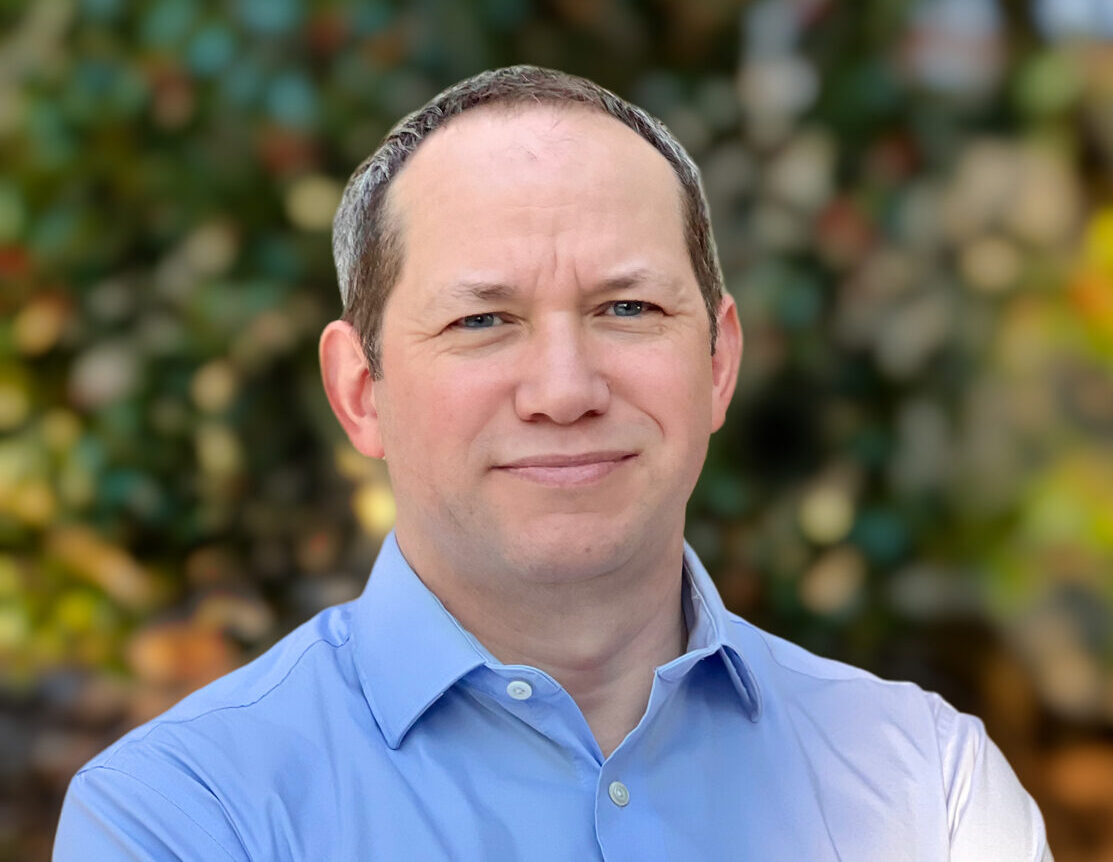Alistair Rogers to Lead Berkeley Lab's Climate and Ecosystem Sciences Division

Alistair Rogers, an accomplished plant physiologist and leader at Brookhaven National Laboratory, has been selected to serve as the next division director for the Climate and Ecosystem Sciences Division in the Earth and Environmental Sciences Area at Lawrence Berkeley National Laboratory (Berkeley Lab). His appointment will be effective March 4, 2024 and follows an extensive international search process.
“We are thrilled to welcome Alistair Rogers to lead the Climate and Ecosystem Sciences Division,” said Bill Collins, associate laboratory director for the Earth and Environmental Sciences Area. “His experience bringing together scientists from the experimental field study and climate modeling aspects of the climate sciences will be instrumental in further advancing the division’s ability to improve predictions related to climate change.”
The Climate and Ecosystem Sciences Division (CESD) at Berkeley Lab, which Rogers will lead, is focused on how climate change impacts ecosystems and societies at local to global scales and across multiple time intervals. More than 130 researchers within CESD use experimental observations and measurements to improve the ability of climate models to predict climate change and related effects, such as extreme weather and diminished food and water. These experts include atmospheric, water, and soil scientists, environmental microbiologists and plant physiologists, and social scientists who work to provide insights on using current climate science for real-world solutions to climate-related impacts such as wildfires and heat waves.
Rogers is an American Association for the Advancement of Science Fellow who has been credited for helping bridge the gap between the experimental study of the effects of climate change on plants and the scientific computational modeling community. He is one of the world’s leading authorities on how plants respond to elevated levels of atmospheric carbon dioxide (CO2) and on how Earth System Models represent photosynthesis, the process plants use to convert CO2 into sugars and other carbon-based compounds. His research has covered many natural and managed ecosystems including row and forage crops, and deciduous and evergreen temperate trees. As the first scientist to collect key photosynthetic data on Arctic species, Rogers helped enable better modeling of productivity in that critical ecosystem.
At Brookhaven, Rogers leads the Terrestrial Ecosystem Science & Technology Group in the Environmental and Climate Sciences Department, and is currently serving as the interim Department Chair. He serves on the leadership team for two projects funded by the DOE Office of Biological and Environmental Research which place high value on the tight integration of experimental work with climate models, the Next Generation Ecosystem Experiments (NGEE) – Arctic project and the NGEE – Tropics project (the latter led by CESD at Berkeley Lab).
“I feel lucky to have worked at Brookhaven these last 25-years, where I’ve had the pleasure of working with brilliant, caring colleagues, and have had incredible opportunities to do fun and exciting science,” Rogers said. “I’ve also benefited greatly from impactful mentorship, and had many opportunities to develop as a leader – I’m particularly grateful for the support I’ve received in this area.”
Rogers said he is excited by the opportunity to collaborate with scientists from such a broad range of disciplines in CESD and is looking forward to continuing to help bridge the gap between experimental study in different types of ecosystems and computational modeling.
“The breadth and depth of expertise within CESD and EESA is truly humbling, and I’m honored to have the opportunity to work for this incredibly talented division,” Rogers said. “When I think about the national and global challenges facing society it is clear that CESD can make important contributions. Helping to make that happen is going to be really exciting.”
Berkeley Lab’s team science model and the emphasis it places on inclusion, diversity, equity, and accountability also attracted Rogers, who is a trained facilitator for ADVANCEGeo – a partnership that aims to address the problem of harassment and exclusion in the Earth, space, and environmental sciences.
“If we don’t create respectful, inclusive workplaces where everyone feels that they belong, people suffer, and science suffers,” he said.
“My work with ADVANCEGeo has shown me the importance of continued education in this area, but also how impactful ally work can be in improving workplace culture. A sincere commitment to IDEA is critical for the future of the National Labs, and Berkeley Lab has particularly strong leadership in this area.”
Rogers earned a Ph.D. in Biology from the University of Essex in the UK, then was drawn to Brookhaven in 1998 for his postdoctoral research by the opportunity to use an approach developed there to expose plants to elevated levels of CO2 in their natural environment. He also held adjunct appointments in the Department of Crop Sciences at the University of Illinois at Urbana Champaign, and has been a member of the graduate program faculty in the Department of Ecology & Evolution at Stony Brook University. Rogers serves as a handling editor at the Journal of Experimental Botany.
In 2023, Rogers was named a Fellow of the Oppenheimer Science & Energy Leader Program, developed to introduce the next generation of Department of Energy leaders to the breadth and depth of the National Laboratory system and expose them to the broader scientific, policy, and energy ecosystem within which the Labs operate.
“One of the many things this incredible program emphasized to me was that team science is not just valuable within a Lab, but also among Labs,” Rogers said. “Tackling big multidisciplinary problems is what DOE does best, and it’s why I’m proud to work at a National Lab.”
Rogers completed his Ph.D. at the University of Illinois Urbana-Champaign in 1998. His work in Long Lab focused on photosynthesis acclimation to elevated CO2. This article was originally published by Berkeley Lab.